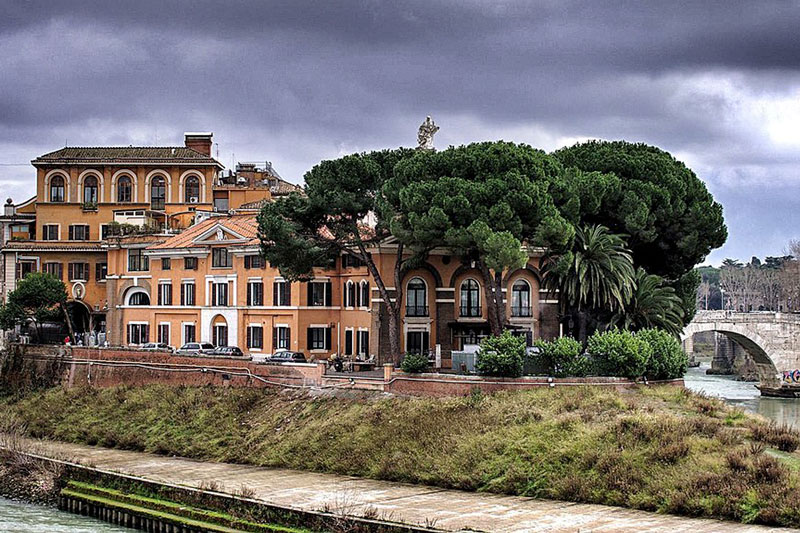The Tiber Island is truly a unique jewel in the heart of Rome, with its millennial history and its picturesque location in the Tiber River. The two bridges that connect it to the banks, the Cestio bridge and the Fabricio bridge, are witnesses of the long history of the city and its connection with the river that crosses it. The Cestius Bridge, dating back to 46 BC, and the Fabricius Bridge, built in 62 BC, are both extraordinary examples of the engineering skills of ancient Rome and are still used today by residents and visitors to access the island.
The legend of his birth is linked to the act of rebellion against the tyrant Lucius Tarquinius Superbus but, in reality, his geological formation is much more prosaic but equally interesting.
The fact that a tuff bank, similar to that of the nearby Capitoline hill, constitutes the geological base of the island tells us about its natural origin and its importance over the centuries for the populations that inhabited both sides of the Tiber River. This strategic location in the heart of Rome has helped to give the island a significant role in the history and culture of the city.
Legend has it that a snake jumps from the ship and takes refuge on the island, where a temple dedicated to Aesculapius is erected. The god Aesculapius, revered as the god of medicine, was often represented, in fact, with a snake, a symbol of healing and rebirth. The fact that the snake chooses Tiber Island as a place of refuge, thus beginning the construction of a temple in his honor, further underlines the importance of the island as a center of healing and healing since ancient times.
The description of the island as a ship, with the obelisk representing the mast, adds a striking touch to the legend, transforming the island itself into a symbol of travel, healing, and hope for the Roman people.
The importance of the Tiber Island as a medical center is also evident in the medieval and modern eras, with the active presence of the hospital “Fatebenefratelli”, founded in 1584 and still operating today, along with the Israelite hospital.
The transformation of the remains of the Roman temple into a Christian church, dedicated to Saint Bartholomew on the Island, represents a significant step in the history of the island, keeping its religious and spiritual importance alive over the centuries.
The Romanesque bell tower of the twelfth century and the excavated column used as a well are precious witnesses of the architecture and everyday life of past eras.
How to get there: (we have chosen public transport)
Book your stay in Rome directly and save on commissions.


